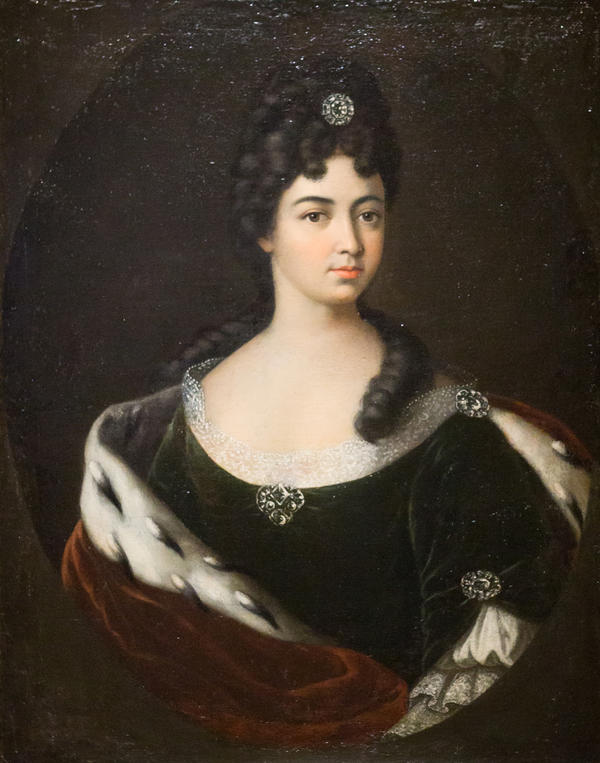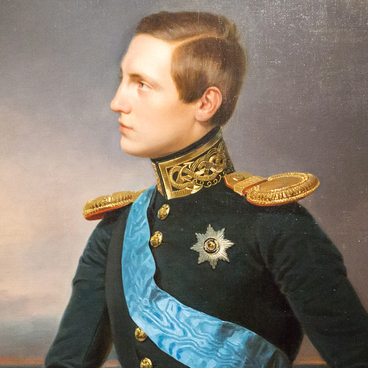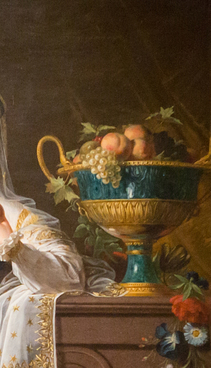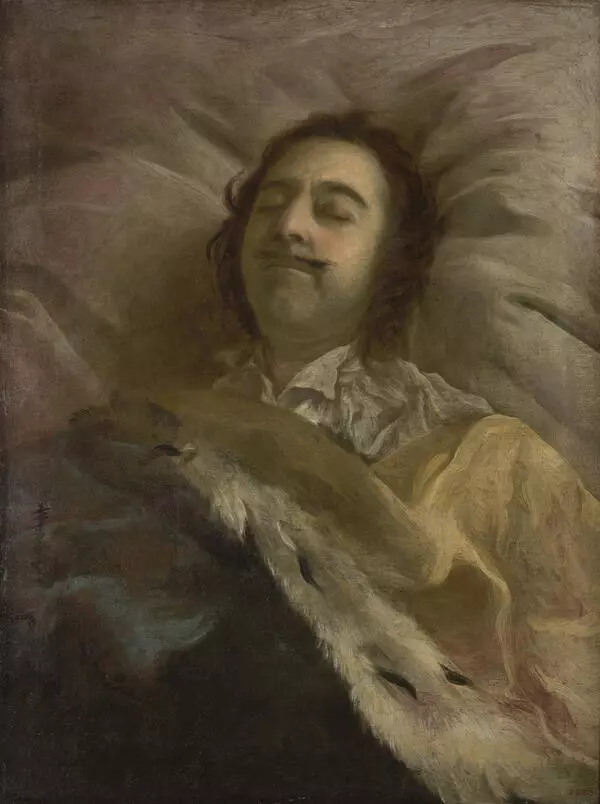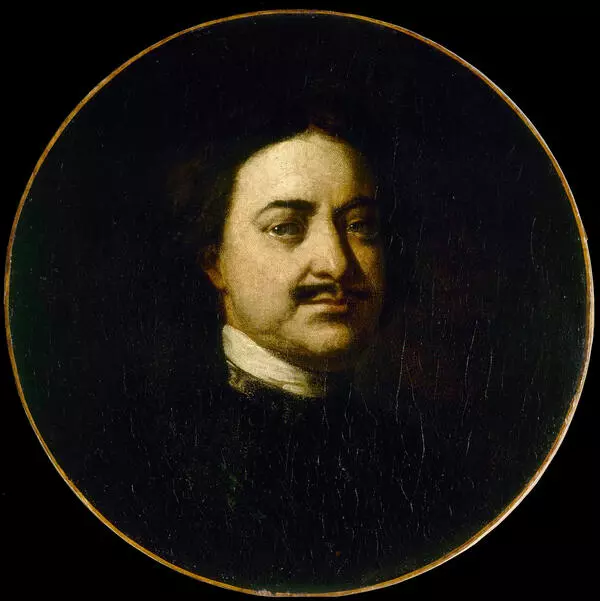The portrait of Princess Kantemir was received by the New Jerusalem collection together with another three portraits: of her father Dmitry Kantemir, her mother Cassandra Cantakuzino and brother Antioch Kantemir. Before the revolution, the pictures were kept at the Moscow Chief Archives of the Ministry of Foreign Affairs where they came from historian Nikolai Bantysh-Kamensky in 1784. He owned the portraits because he was related to the family of Moldavian ruler Kantemir. In 1918, the portraits, with all its collection of paintings and prints, landed at the State Museum Fund from where they were transferred to the Leninsky Local History Museum in Tsaritsyno. The latter closed in 1937 and the portraits arrived at the New Jerusalem Museum. The portrait of Princess Kantemir was received by the New Jerusalem collection together with another three portraits: of her father Dmitry Kantemir, her mother Cassandra Cantakuzino and brother Antioch Kantemir. Before the revolution, the pictures were kept at the Moscow Chief Archives of the Ministry of Foreign Affairs where they came from historian Nikolai Bantysh-Kamensky in 1784. He owned the portraits because he was related to the family of Moldavian ruler Kantemir. In 1918, the portraits, with all its collection of paintings and prints, landed at the State Museum Fund from where they were transferred to the Leninsky Local History Museum in Tsaritsyno. The latter closed in 1937 and the portraits arrived at the New Jerusalem Museum.
Portrait of Kantemir
Время создания
1720s?
Размер
90x70 cm
Техника
oil on canvas
Коллекция
11
Открыть в приложении#5
Ivan Nikitin?
Portrait of Kantemir
#2
#8
This work is deemed to have been created in the 1720s. It is attributed to painter Ivan Nikitin, Peter the Great’s court artist. Having studied in Italy for four years and returned to Russia, he was one of the first to begin paining in the European manner. He did the portrait in the baroque style, which is seen from the composition: the subject is depicted bust-length, in an oval on a rectangular canvas, with a characteristic turn of the head and body, detailed facial features, and the look addressed to the viewers.
At the same time, the portrait still bears some traces of the traditional parsuna, a secular portrait close in style to the icon. The master practically did not use the chiaroscuro technique to create volume making the image close to two-dimensional. There are not many half-tones but a lot of clear lines and a characteristic solid dark background. This kind of duality is typical of the Russian portraiture painting of Peter the Great’s times.
#10
Some experts believe that depicted in the portrait is Smaragda, the second daughter of Moldavian ruler Dmitry Kantemir and his first wife Cassandra Cantakuzino because of the half-effaced inscription on the canvas: Princess Smaragda Kantemir. However, many facts challenge its authenticity. Firstly, it is the title — Smaragda had never been married, she died at the age of 16, in 1719. On top of that, the girl depicted in the portrait looks much older than the proposed model.
#11
Some other experts believe that it is Dmitry and Cassandra’s elder daughter, Maria Kantemir. This version is partly corroborated by the woman’s appearance, her attire, a diamond hairpin and diamond clasps on her dress. It follows from Maria Dmitrievna’s will, which she made in 1725, that her father had bequeathed her deceased mother’s diamonds to her.
Judging by the history of the portrait, the confusion with the inscription might have happened at the end of the 18th century when the Kantemir family ceased. Their estate was written off to the treasury, their family portraits were given to trustees and new owners of the houses. One of them could have put a wrong inscription on the canvas having taken the depicted character for Smaragda.
#12
New Jerusalem Museum
читать дальшескрыть
00:00
00:00
1x
Portrait of Kantemir
Время создания
1720s?
Размер
90x70 cm
Техника
oil on canvas
Коллекция
11
Открыть в приложении
Поделиться

